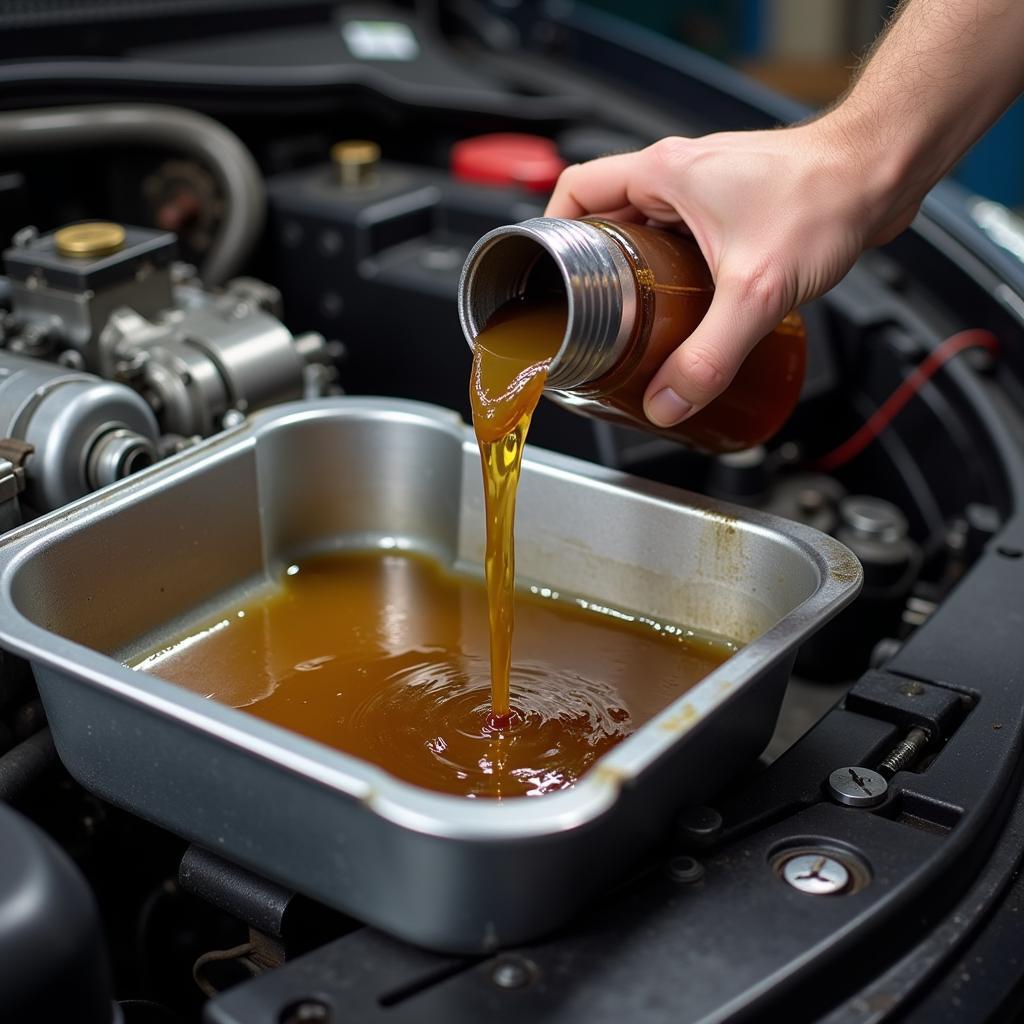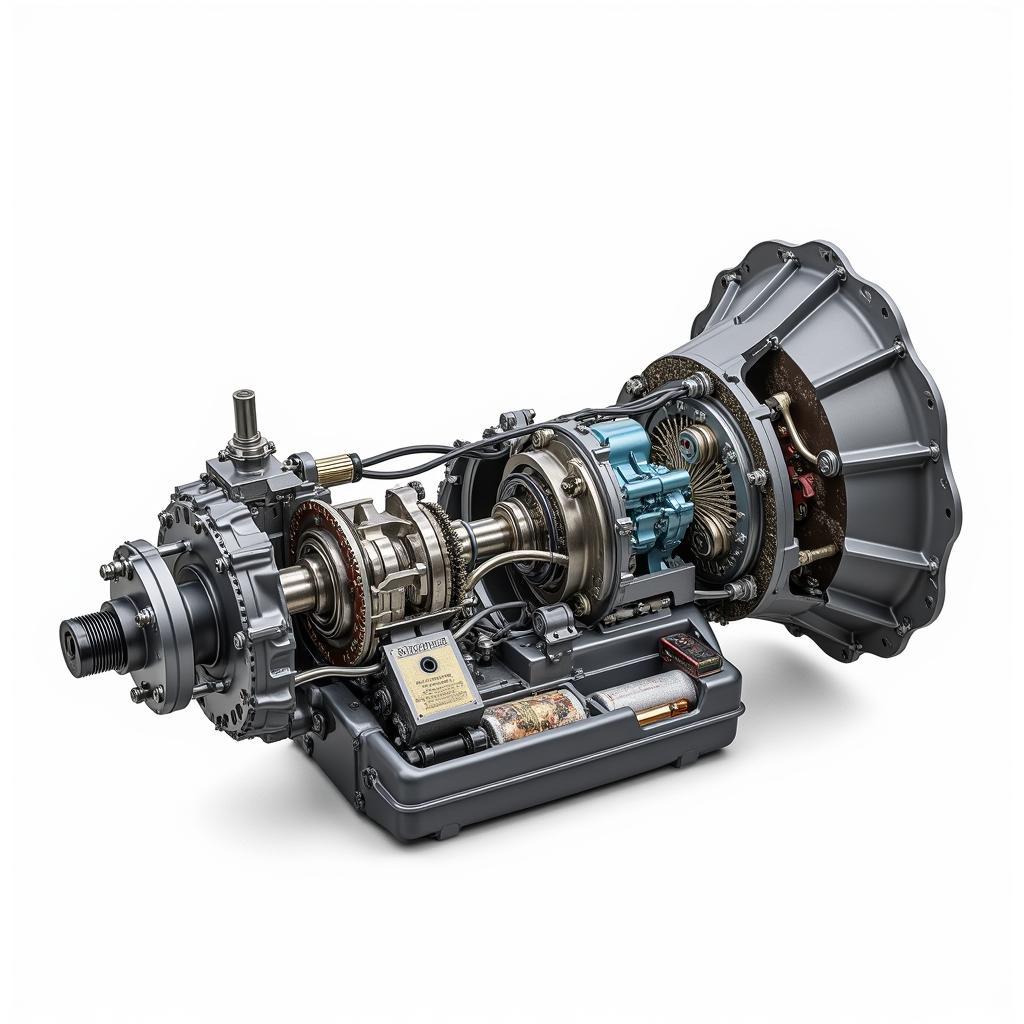Automatic Car Clutch Problems can be a real headache, leaving you stranded or facing hefty repair bills. Understanding the common issues, how to diagnose them, and potential solutions can save you time, money, and frustration. This guide will delve into the intricacies of automatic clutches, equipping you with the knowledge to tackle these issues head-on.
Common Automatic Car Clutch Problems: What to Look For
While automatic transmissions don’t have a traditional clutch pedal, they still rely on a clutch mechanism to engage and disengage the engine from the transmission. Several components can malfunction, leading to a range of driving issues. These include problems with the torque converter, transmission fluid, solenoids, and the valve body. Recognizing the symptoms is the first step to resolving the problem.
- Slipping: The engine revs up but the car doesn’t accelerate as expected, a classic sign of a worn or damaged clutch. This can be due to low transmission fluid, worn clutch plates, or a faulty torque converter.
- Rough Shifting: Jerky or abrupt gear changes indicate a problem within the clutch mechanism, possibly due to faulty solenoids or a malfunctioning valve body.
- Delayed Engagement: A noticeable delay between shifting into gear and the car actually moving can signal a problem with the clutch, often related to hydraulic issues or a failing torque converter.
- Overheating: Excessive heat generation in the transmission can point towards a slipping clutch, which generates friction and heat. This can be accompanied by a burning smell.
- Check Engine Light: The check engine light can illuminate for a variety of reasons, including clutch-related issues. Using a diagnostic scanner can pinpoint the specific problem code.
Diagnosing Automatic Car Clutch Problems
Pinpointing the exact cause of the problem often requires a systematic approach. Start by checking the transmission fluid level and condition. Low or dirty fluid can cause a multitude of issues. If the fluid appears burnt or smells unusual, it’s a sign of serious internal problems. Next, use a diagnostic scanner to read any error codes stored in the car’s computer. These codes can provide valuable clues about the source of the problem.
Using a Diagnostic Scanner
A diagnostic scanner can identify specific issues within the transmission control system. This is a crucial step in diagnosing automatic clutch problems. The codes retrieved from the scanner can pinpoint faulty sensors, solenoids, or other components.
 Diagnostic Scanner Reading Transmission Codes
Diagnostic Scanner Reading Transmission Codes
Fixing Automatic Car Clutch Problems: DIY vs. Professional Repair
Some clutch problems, like low transmission fluid, can be easily addressed by topping off the fluid. However, more complex issues, such as a faulty torque converter or valve body damage, require professional expertise. Attempting complex repairs without the proper knowledge and tools can lead to further damage and higher repair costs.
When to Call a Professional
If you’re experiencing persistent clutch problems or if the diagnosis points towards a complex issue, it’s best to consult a qualified transmission specialist. They have the necessary expertise and specialized equipment to accurately diagnose and repair the problem.
Preventing Automatic Car Clutch Problems: Maintenance Tips
Regular maintenance is crucial for preventing clutch problems and extending the lifespan of your automatic transmission. This includes regular fluid changes, following the manufacturer’s recommended intervals, and avoiding harsh driving habits that put excessive strain on the transmission.
- Regular Fluid Changes: Fresh transmission fluid ensures proper lubrication and cooling, preventing premature wear and tear on the clutch components.
- Gentle Driving: Avoid aggressive acceleration and sudden stops, which can strain the clutch and other transmission components.
- Regular Inspections: Periodic inspections by a qualified mechanic can identify potential issues early on, preventing them from developing into major problems.
 Automatic Transmission Fluid Change
Automatic Transmission Fluid Change
“Regular maintenance is like an insurance policy for your transmission. It’s a small investment that can save you from costly repairs down the road,” says John Smith, a certified automotive technician with over 20 years of experience.
Conclusion: Staying on Top of Automatic Car Clutch Problems
Automatic car clutch problems, while potentially serious, can be effectively managed with proper diagnosis and maintenance. By understanding the common symptoms and taking preventative measures, you can keep your automatic transmission running smoothly for years to come. If you’re experiencing persistent issues, don’t hesitate to reach out to Autotippro for expert advice and assistance. Contact us at +1 (641) 206-8880 or visit our office at 500 N St Mary’s St, San Antonio, TX 78205, United States.
 Modern Car Automatic Transmission
Modern Car Automatic Transmission
“Ignoring transmission problems is like ignoring a ticking time bomb. Addressing them early on can save you a lot of trouble and expense,” advises Sarah Jones, a leading transmission specialist at AutoTipPro.




Leave a Reply